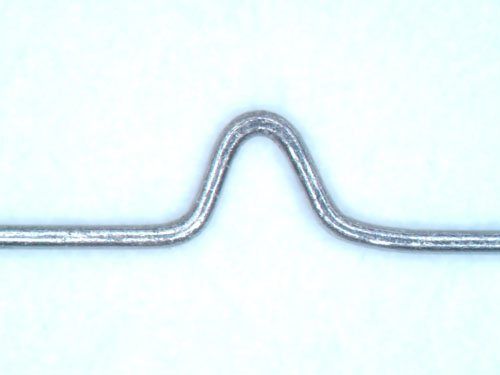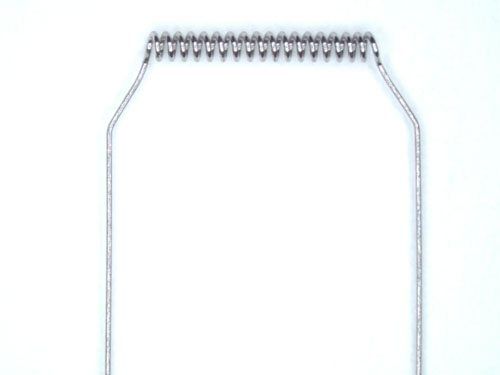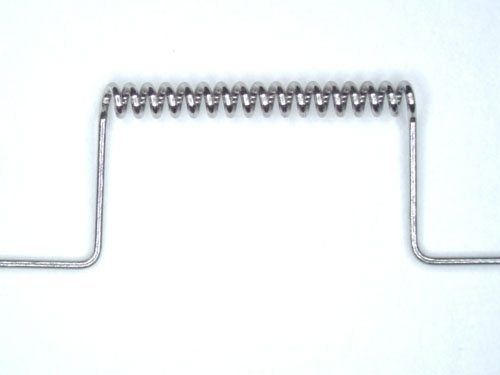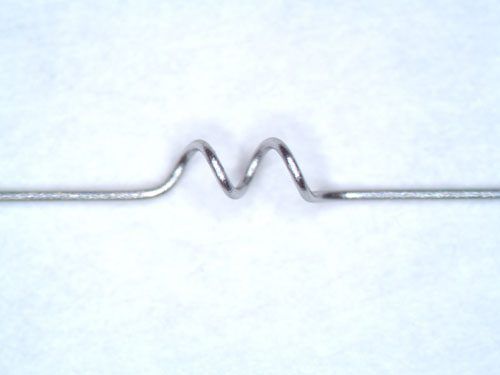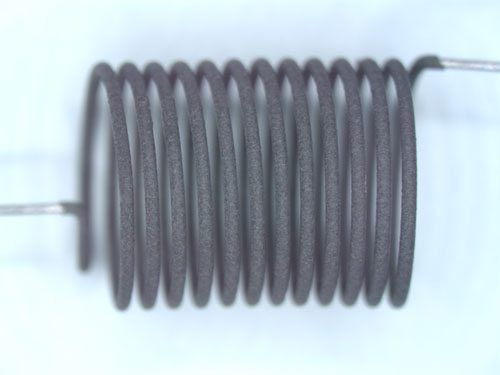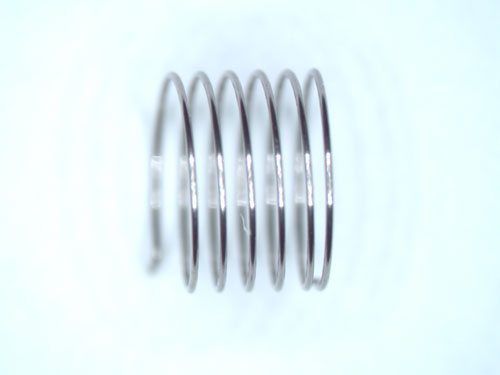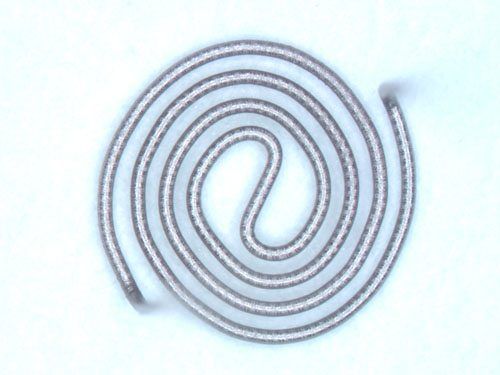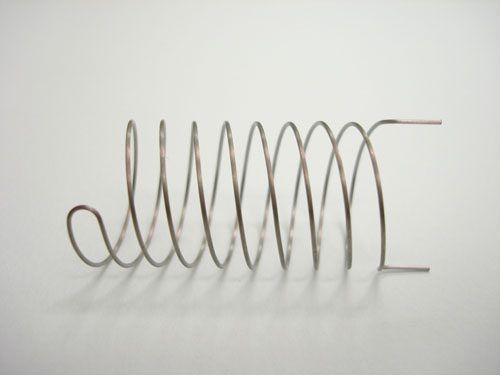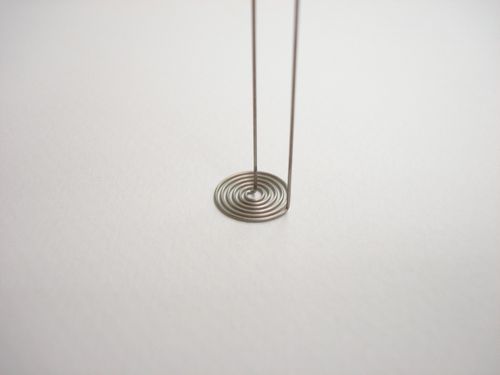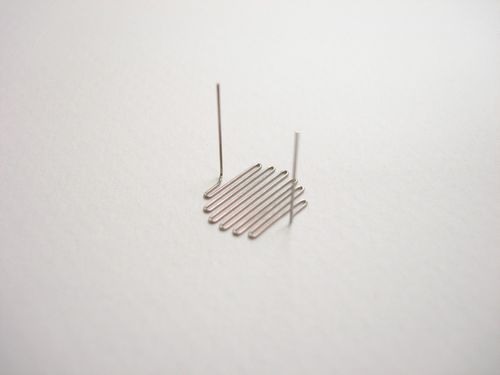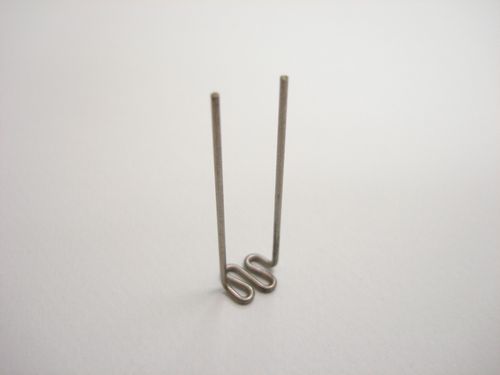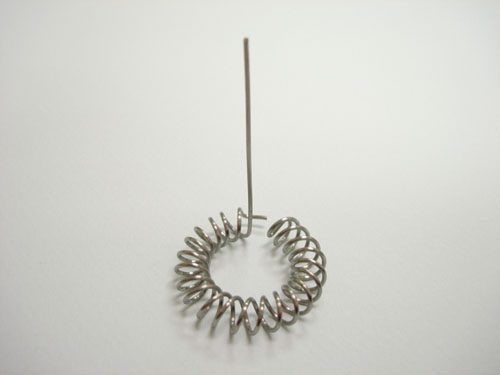About Pure Rhenium
Pure rhenium is an important material for many scientific instrument filaments, as well as other electron and ion source filaments. Most rhenium naturally occurs in porphyry copper deposits. Hydrogen reduction is used to convert ammonium perrhenate to pure rhenium powder. The pure rhenium powder is pressed and sintered into ingots. These pure rhenium ingots are then swaged, rolled, and/or drawn to the final wire or ribbon size.
Properties of Pure Rhenium Wire
Because rhenium retains its ductility from subzero to high temperatures, it does not have a Ductile-Brittle Transition Temperature (DBTT). Rhenium also has one of the highest modulus of elasticity among all metals, second to only iridium and osmium. As the temperature increases from room temperature to 725°C, rhenium’s modulus only decreases about 20%. This property allows for filaments made with pure rhenium to have excellent mechanical stability and rigidity. Even at high stresses and temperatures up to 2800°C, the rupture life of rhenium is longer than that of tungsten.
In addition, out of all the refractory metals, rhenium has the highest recrystallization temperature. A high recrystallization temperature is important, because this ensures good creep resistance. Compared to other refectory metals, rhenium has superior tensile and creep-rupture strengths over a wide temperature range. Pure rhenium can also accommodate wide swings in operating temperature without experiencing mechanical damage. Additionally, rhenium does not form stable carbides and is resistant to the water cycle.
Uses for Pure Rhenium Wire
Because rhenium has increased ductility properties, does not form stable carbides, and is resistant to the water cycle, it is the best material for the following applications:
● Filaments for Mass Spectrometers and Other Scientific Instruments
Here at Union City Filament, we use rhenium as the base material for mass spectrometer filaments and other scientific instrument filaments. We began using rhenium in the 1990s for mass spectrometer filaments because it is less reactive than other materials we had previously worked with. In addition, because many samples in mass spectrometers contain large percentages of water, rhenium is the ideal material to use because it is more resistant to the water cycle compared to other materials. Further, rhenium has the capability of remaining ductile no matter the temperature, making it less likely to be ruptured by thermal or mechanical shock.
Pure Rhenium Wire Filament Design
If you’re in need of filament design, whether it be for mass spectrometers or other scientific instruments and electron and ion sources, you can trust the experts at Union City Filament to design the best product to suit your needs. Since 1950, we have been creating the best industry processes for winding and forming tungsten, molybdenum, rhenium, and their alloys so that they hold the tightest possible tolerances on dimensions and uniformity. For more information on how we can help your business, please contact us today.
Regardless of what your end application is, Union City Filament’s expert engineers will work with you to design the best filament or heater to suit your needs.
Questions? Contact us today for help.
